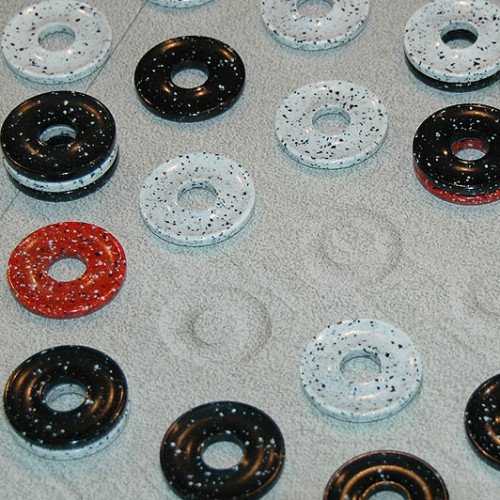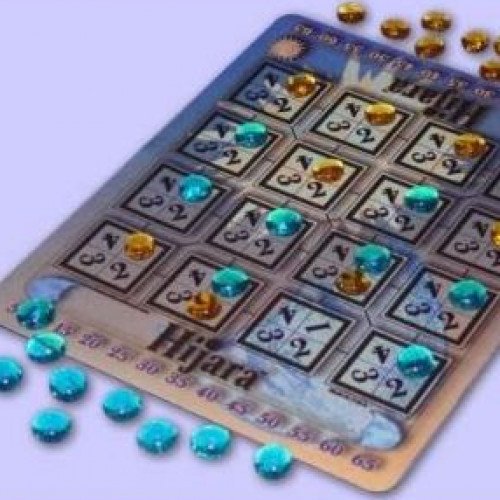DVONN VS HIJARA

DVONN
DVONN is a two-player strategy board game in which the objective is to accumulate pieces in stacks. It was released in 2001 by Kris Burm as the fourth game of the GIPF Project. DVONN won the 2002 International Gamers Award and the Games magazine Game of the Year Award in 2003. DVONN is played on a board with 49 spaces. The board has a hexagonal layout 5 hexes wide. One player has 23 black pieces to play, the other player has 23 white pieces. There are also 3 neutral red pieces, called DVONN pieces. The object of the game is to control more pieces than your opponent at the end of the game. The game starts with an empty board and proceeds in two phases. During the first phase, the players place their pieces on the board, starting with the three red DVONN pieces. Pieces can be placed on any unoccupied space. White starts, and the players alternate. So Black is the first to place a piece of his own color. The first phase ends when all pieces are placed on the board, filling it completely. The second phase involves the building of stacks of pieces (a single piece is also considered a stack) by moving stacks onto other stacks. A stack is controlled by a player if his color is on top. A stack is immobile if it is surrounded by 6 neighboring stacks. The white player has the first move in this phase. Any mobile stack of height n (with n > 0) can be moved (in a straight line) in any one of the 6 directions by exactly n spaces by the player controlling it, if it lands on another stack. Jumping over empty spaces is allowed, as long as the tower does not land on an empty space. Single DVONN pieces cannot be moved, but they can be once they are part of a stack. After each move, all stacks that are not connected via a chain of neighboring stacks to any stack containing a DVONN piece are removed from the board.
Statistics for this Xoptio

HIJARA
Hijara is a two-player abstract strategy board game played with small stones. It has been likened to a three-dimensional game on a two-dimensional board. The game was designed by Martin H. Samue| and first printed, as Excel, by American Airlines in their inflight magazine, American Way, on December 24, 1985 and July 22, 1986. It has been sold commercially as Eclipse in 1994, and Hijara (the Arabic word for small stones) in 1995, 2003 and 2006. The original commercial edition of Hijara has a game board of 16 squares, divided into 4 sections numbered 1 through 4 and a score-keeping "ladder" on either end. Players choose either yellow or blue and use 32 same-color stones plus one score-keeper each. Blue starts and players take turns placing their stones, one at a time, on any square, building on those already on the board, to complete and block point-scoring combinations. When a player places a stone on a square, it must be placed in the lowest-numbered open section in that square. So, for every square, the first small stone must be placed on the 1, second on the 2, etc. The game starts with an empty board, and ends with a full board with 3 ways to score points when placement of four same-color stones is completed in any of the following combinations: 10 points - 4 stones of the same color on 4 numbers of a kind in a row - horizontally, vertically, or diagonally. 15 points - 4 stones of the same color in numerical sequence (i.e. 1-2-3-4) - horizontally, vertically, or diagonally. 20 points - 4 stones of the same color in one square. Points are won with a player's own-color stones and are always accrued, never deducted. Several point-scoring combinations may be completed at one time with a single stone. Overlooked points are forfeited and, throughout the game, players keep score on their side of the board with an extra stone of their color. The game is over when the last small stone is placed and all the numbers are covered then, by comparing accrued points totals, the player with the greater number of points is the winner of the game.